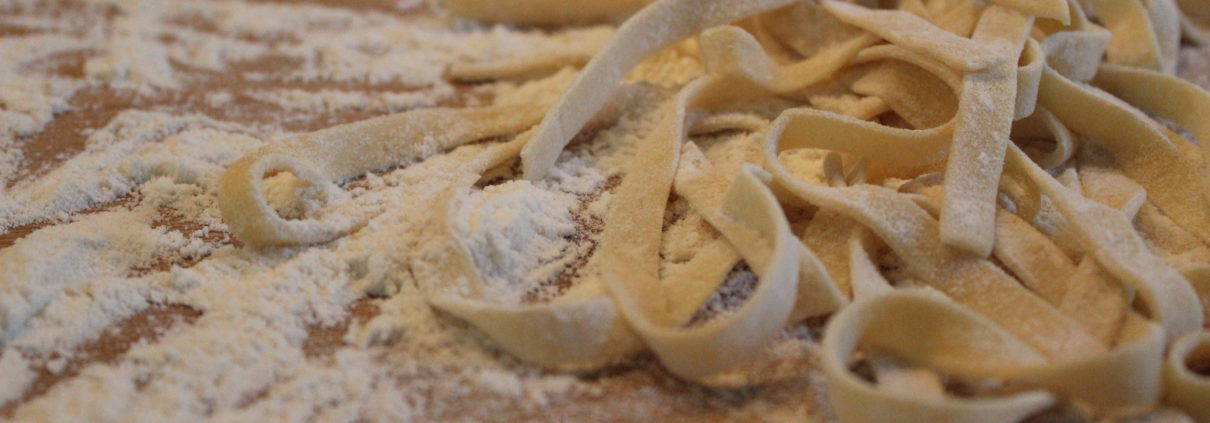A trip to Rome in search of culinary ideas delivers a different sort of inspiration
For the better part of, oh, about 2,000 years now, we’ve known that all roads lead to Rome. Or at least that’s what the empire-happy ancient Romans told us.
When it comes to preparing unforgettable food, they were definitely correct in that rather bold assumption. Italy has been a culinary hotbed for centuries, a place where aspiring chefs venture for inspiration and training; where tourists go to unintentionally grow their waistlines as they chow down on an assorted array of delicious pasta; and where foodies travel to dine in the restaurants of celebrity artistes such as Antonino Cannavacciuolo and Massimo Bottura. Best of all, the sizeable Italian diaspora have carried the recipes and techniques of everyone from their greatest chefs to their most discerning nonnas around the world, bringing the tastes, textures and aromas of Italy wherever they settled.
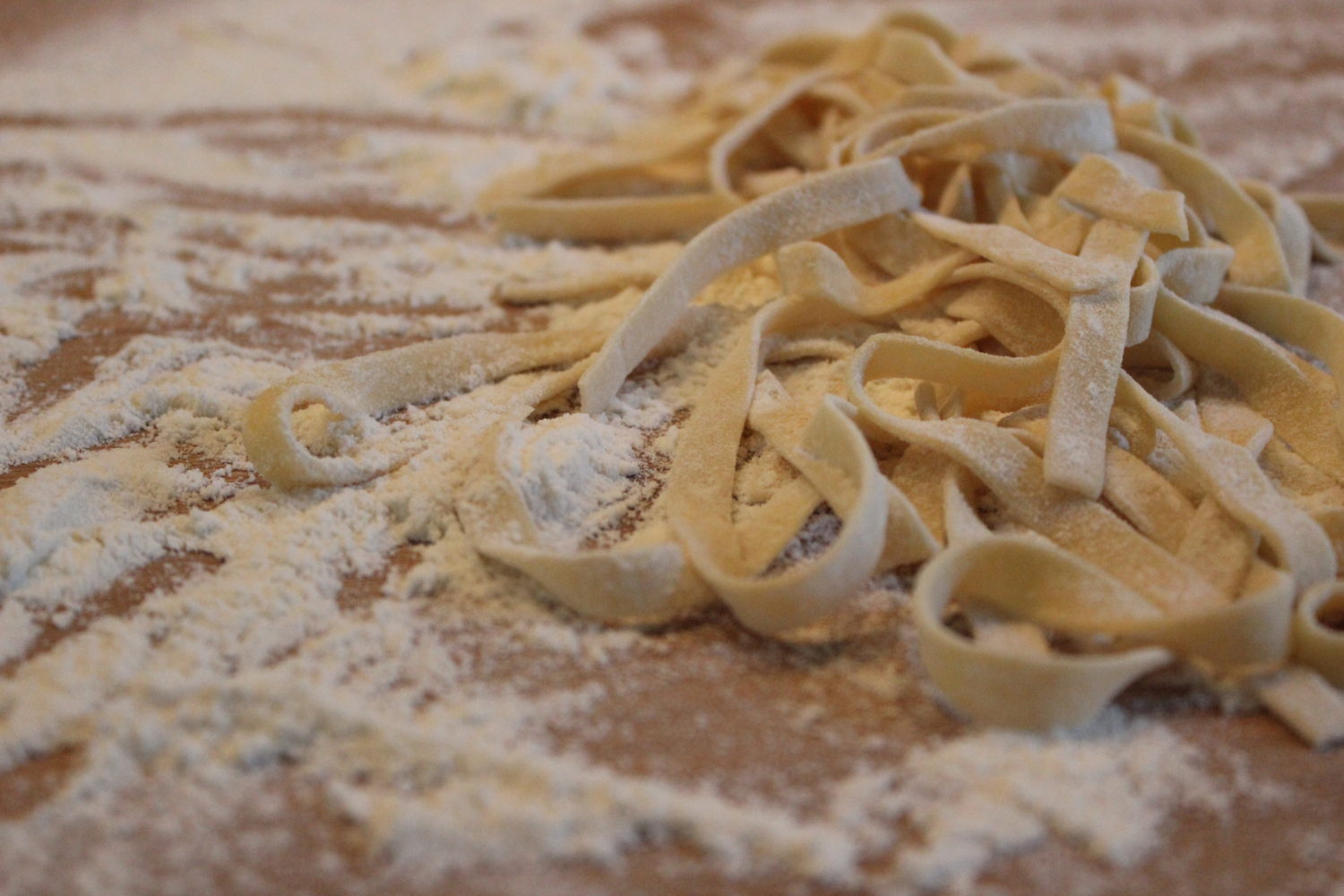
Italians are very particular about their scratch-made pasta.
When Kiss the Cook CEO Fia Pagnello learned that I would be travelling to Rome with my family this past July, she gave me only one instruction: eat well and come home with ideas (OK, one added instruction: “Bring me a nice Brunello”). Since I first came aboard to help Toronto’s favourite caterer create interesting foodie-friendly content, I’ve developed a whole new relationship with—and appreciation of—great cuisine. While I may not be a chef, I do love indulging in local delicacies while abroad and I make sure to pay close attention to the culturally-specific flare that makes these dishes so unique. I couldn’t have been given a more enticing assignment.
And let’s face it, a little culinary inspiration is always a helpful way to inform Kiss the Cook’s latest and greatest Italian creations. Everything from our signature pasta stations to three-cheese tortellini in pesto sauce and our chef-carved traditional porchetta are longstanding client favourites. Perhaps I could find the perfect pizza? Maybe a primo pasta to add to the menu?
My marching orders in hand, I set out to taste my way across the Eternal City. This being roughly my sixth visit to the Italian capital, I have a few favourite haunts. One is Da Pancrazio—a near 100-year-old trattoria off the Campo d’ Fiori where the food is simple and delicious and the setting magical. Diners regularly ask to eat ‘sotto’ in the restaurant’s lower level that also happens to be situated in the ruin of an ancient Roman building, the Theatre of Pompey.
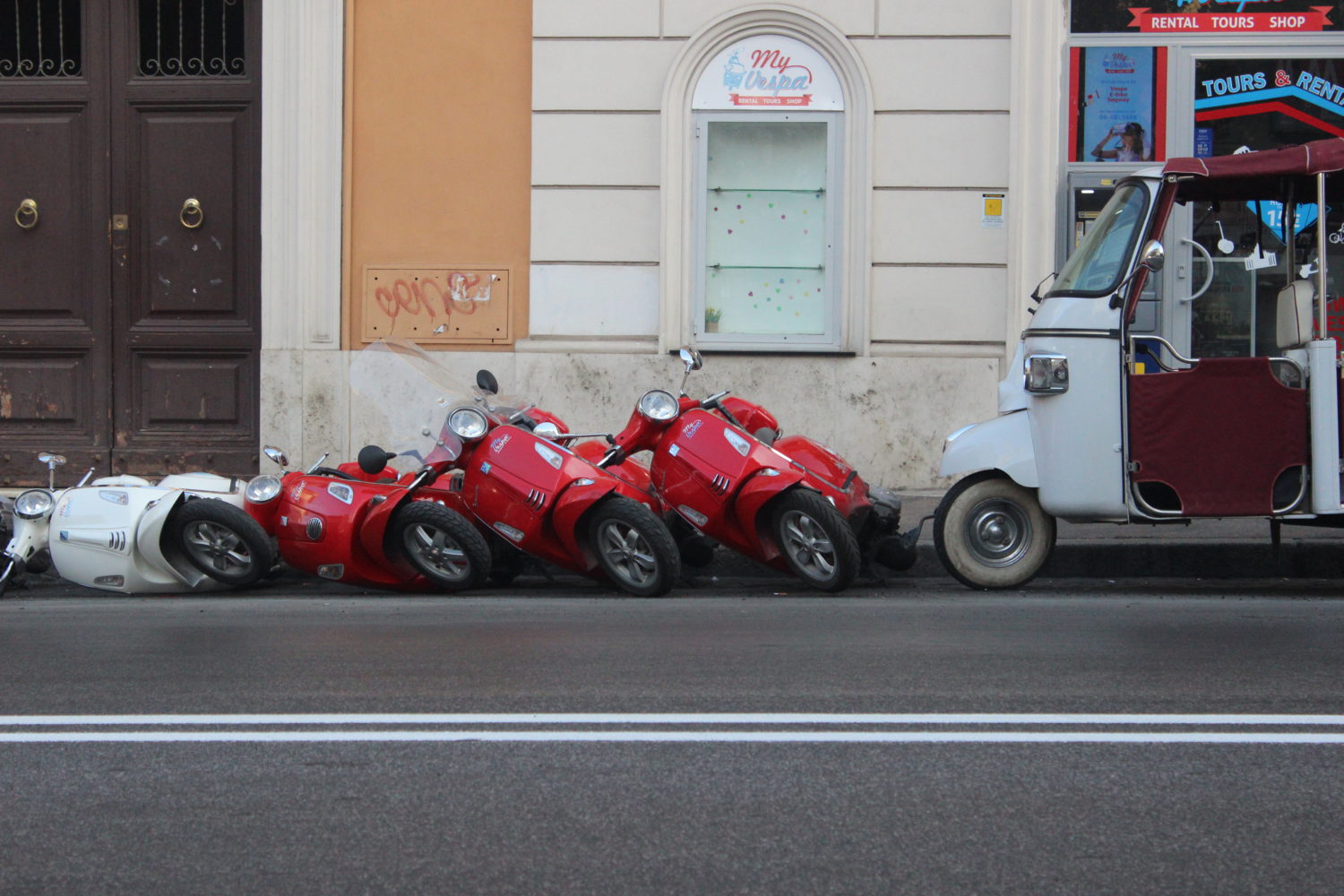
Even when things go wrong in Rome, it’s reassuring to know that another great meal is just around the corner.
Mostly, I wanted to return to Canada with a reminder of the uniqueness of authentic Italian cuisine, especially traditional Roman favourites.
A day into my adventure, however, I was instead reminded of Rome’s oppressive midsummer heat ranging from the mid-to-high 30s, usually without a cloud in sight. Sightseeing with three children in tow—ages nine to five—makes this an interesting sort of challenge. That means plenty of time spent exploring historic attractions such as the Forum and Colosseum, and trips to local restaurants that cater to the tourist hordes.
Rather than choosing a trattoria based on its bona fides, our decision for a lunch or dinner destination was instead based on the availability of air conditioning and gelato. Rest assured that even in tourist-trap restaurants, the food is still typically above average.
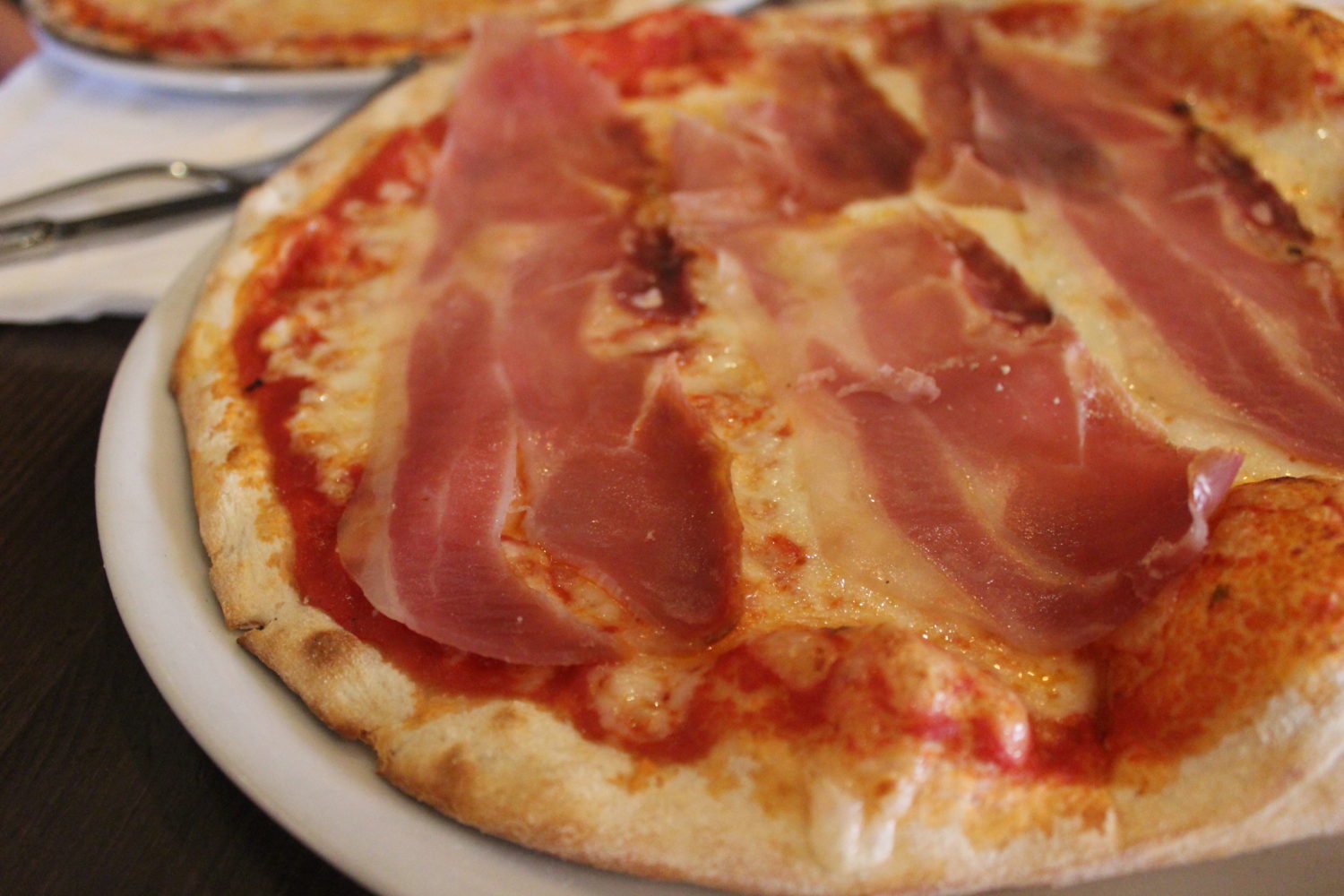
You have to try hard to find disappointing pizza in the Eternal City.
The pizza we sampled had perfectly chewy thin crusts with creamy mozzarella, tangy tomato sauce and well-cured prosciutto. Traditional Roman dishes such as suppli—essentially fried risotto balls with a cheesy centre—carciofi alla giudia (deep-fried artichoke) and creamy pasta carbonara (Fia’s favourite!) offered a perfect foray into local cuisine that would have left me satisfied had we ended there.
But my trip wouldn’t be complete and our CEO wouldn’t be pleased unless I took the taste-testing to the next level. So, I enrolled my crew in an authentic gelato and pasta-making class.
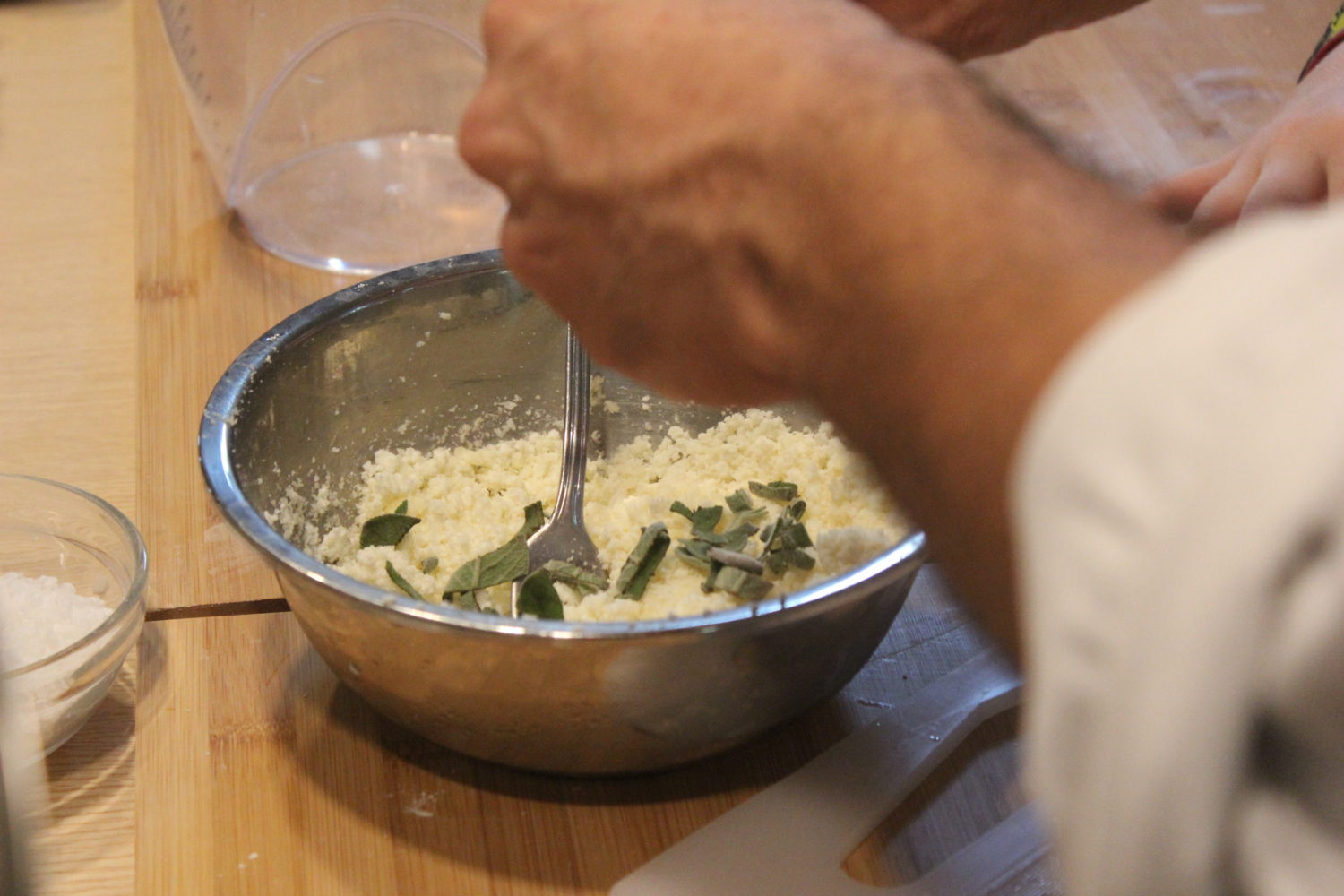
Ricotta and sage for the ravioli stuffing.
When we arrived at a building on the banks of the Tiber to begin our tasty adventure, we were met by two Italian chefs—Mau and Misha—who would usher us to their kitchen. Italians take food seriously, to say the least, even more so when it comes to making fresh pasta. They guided us through the process of weighing out the fine semolina flour that we would be using to hand-prepare ravioli and fettucine. Sage and ricotta were blended to make filling for the former. Eggs were cracked and whisked, dough was rolled seemingly endlessly.
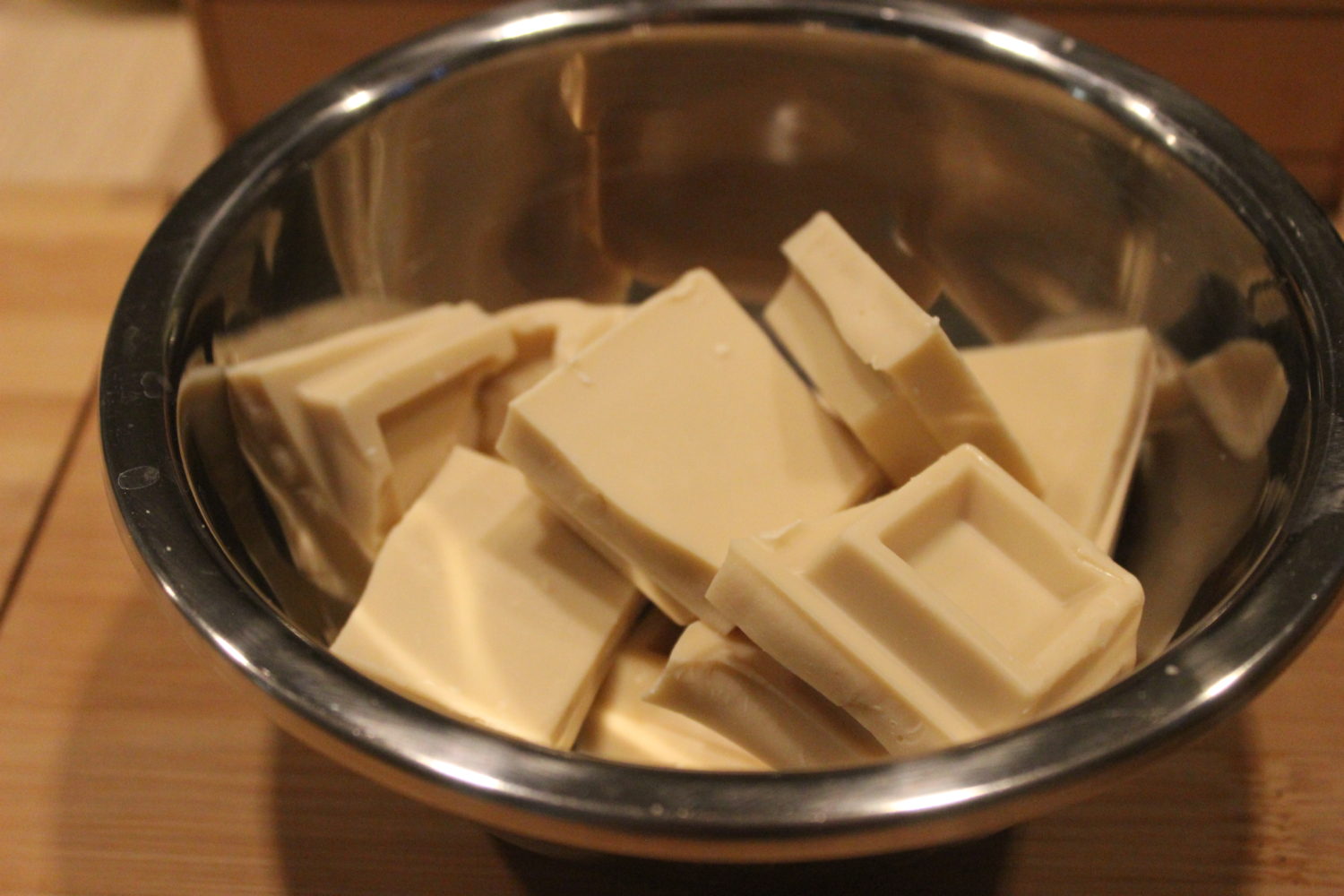
White chocolate for the delicious gelato to come.
At the same time, others in our class—another Canadian family, no less—began the gelato preparation. They peeled juicy peaches, chopped white and dark chocolate and added cream for whisking up the sweet concoctions that would be put into a fridge for a quick frosting before being carefully poured into the resident gelato machines. There’s a reason why most people buy ready-made ice cream. This is a very involved process.
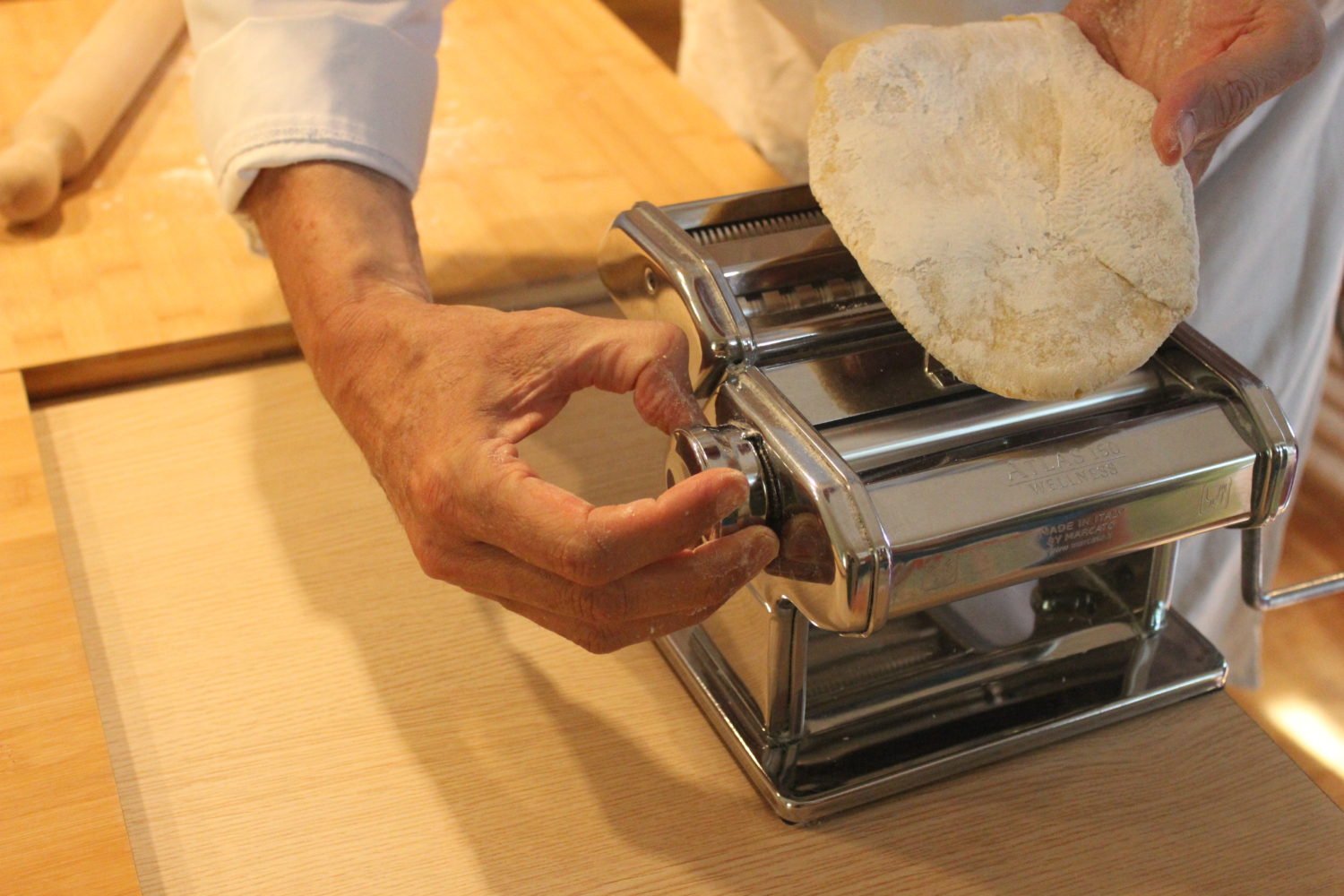
Five passes through the pasta maker to achieve perfect ravioli thinness.
Back to the pasta. Our chefs thoughtfully taught us the fine art of rolling sheets of dough to make our stuffed pasta pillows—then five times through the pasta maker to ensure the exact thinness. They showed us how to stuff the ravioli and cut it with care. They even resisted snapping when, mistake after mistake, we finally managed to produce pockets that would pass muster. Then, eventually, our creations made it into the pot for a quick, al dente boil.
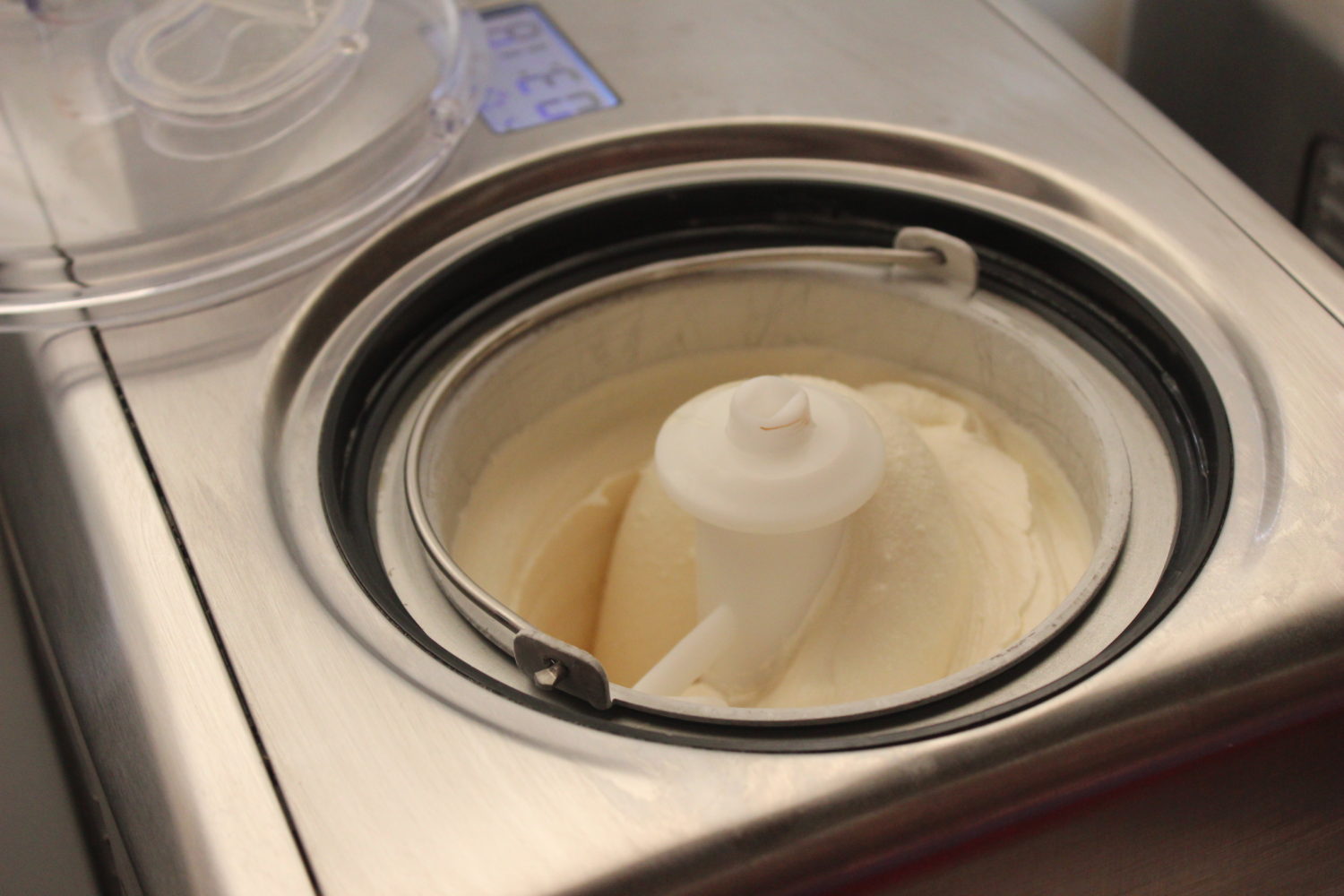
White chocolate gelato nearly ready to eat.
The timer sounds—our white and dark chocolate gelato was ready to devour.
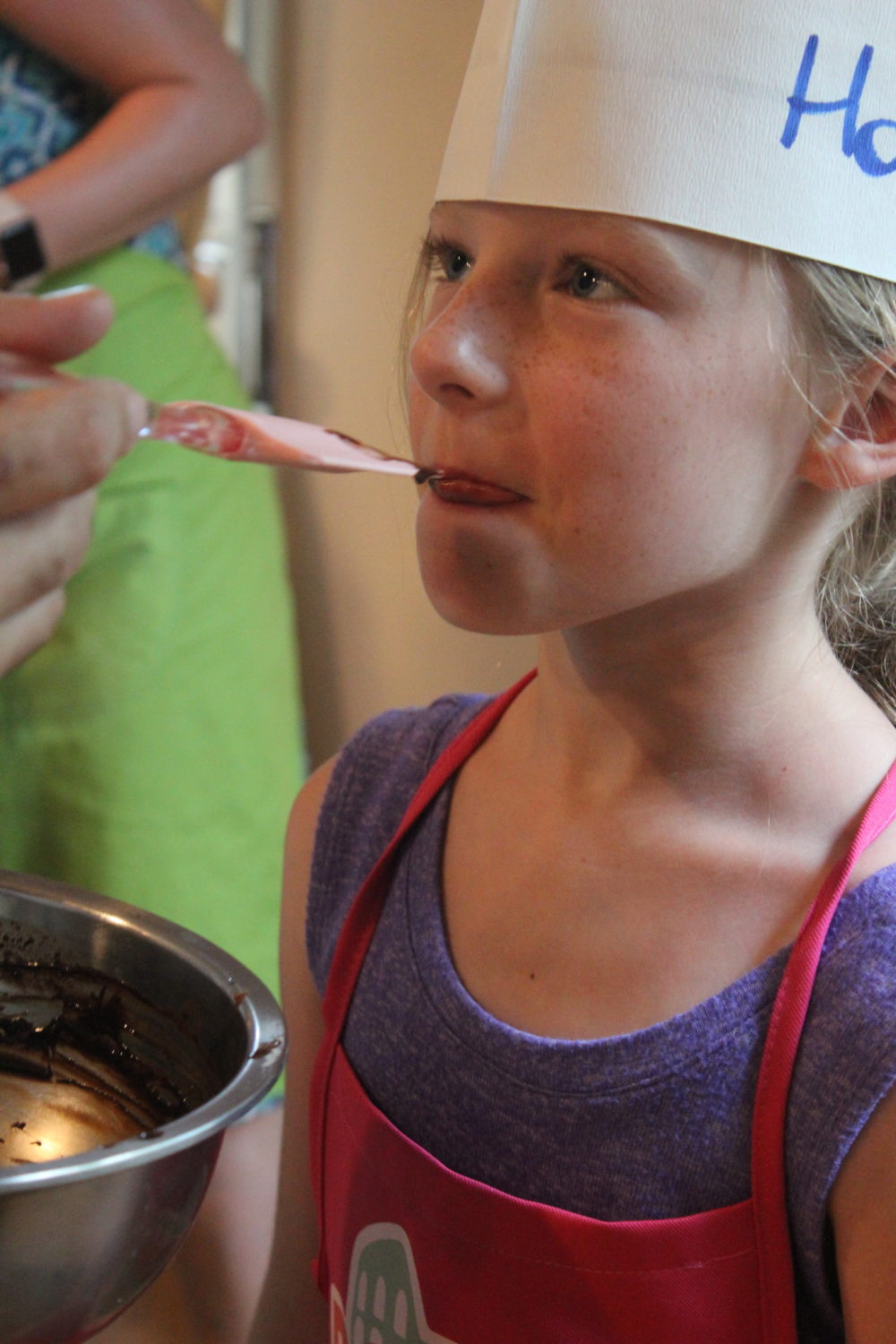
A pint-sized chef enjoys the frozen fruits of her labour.
On the other side of the kitchen, sage and garlic were chopped and oil heated for a sauce so light and flavourful and simple that it seemed like a revelation. Not all pasta has to be drenched in a tomato or cream sauce! Our pasta was tossed in the clear concoction and then sprinkled with fresh parmesan. This is the way pasta was meant to be eaten. Right-sized portions that leave one satisfied, yet so tantalizing they leave you longing for just a little bit more.
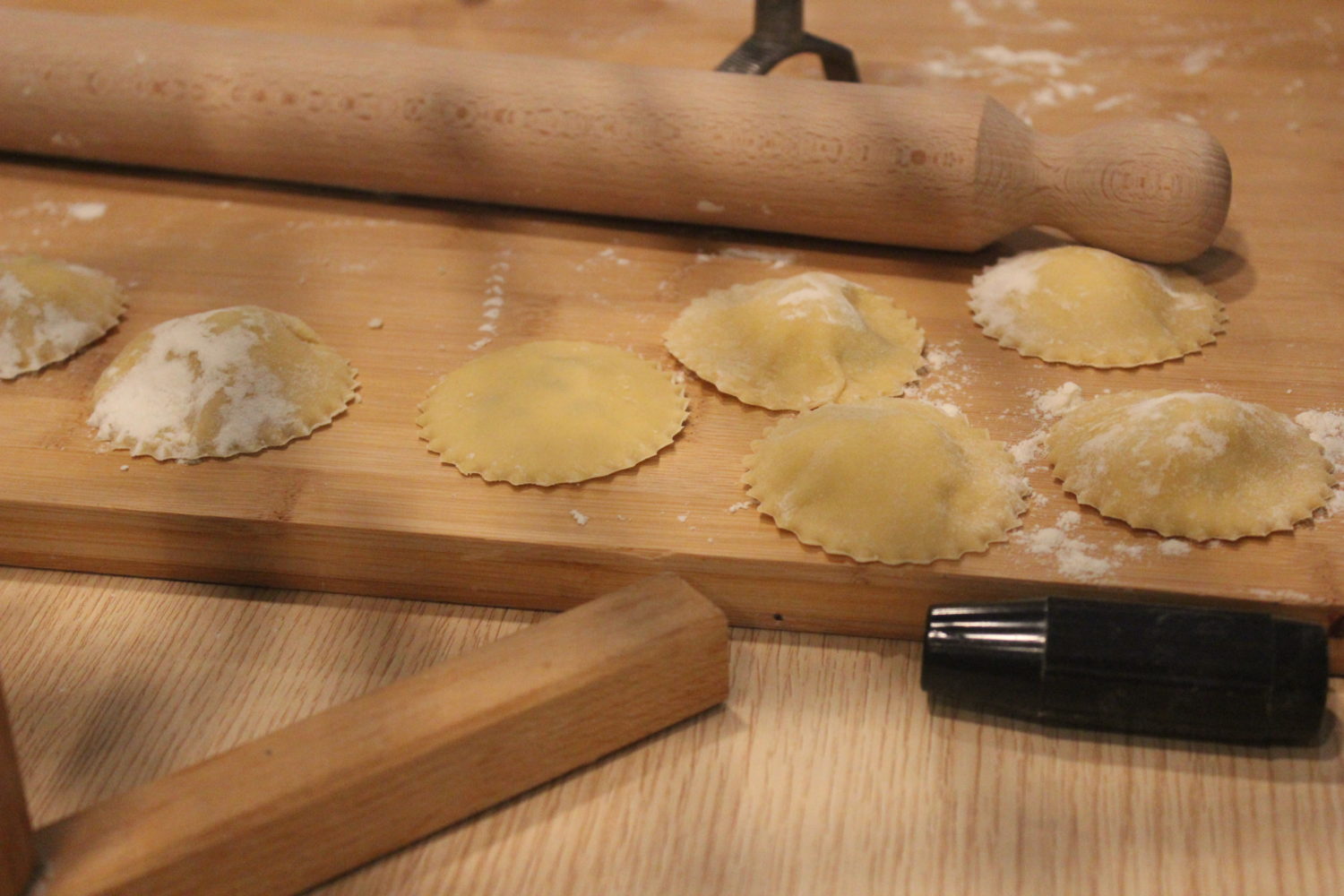
A meal well worth the effort.
Then the best part—an opportunity to eat these irresistible dishes. And then it struck me as our two Canadian families sat down to break bread. We’d never met before, but found common ground discussing our work, hockey, you name it. We shared a few laughs and listened to each other’s stories. Our kids even managed to strike up a quick bond. All of us raved about the food. A crisp pinot grigio helped lighten the mood a little further.
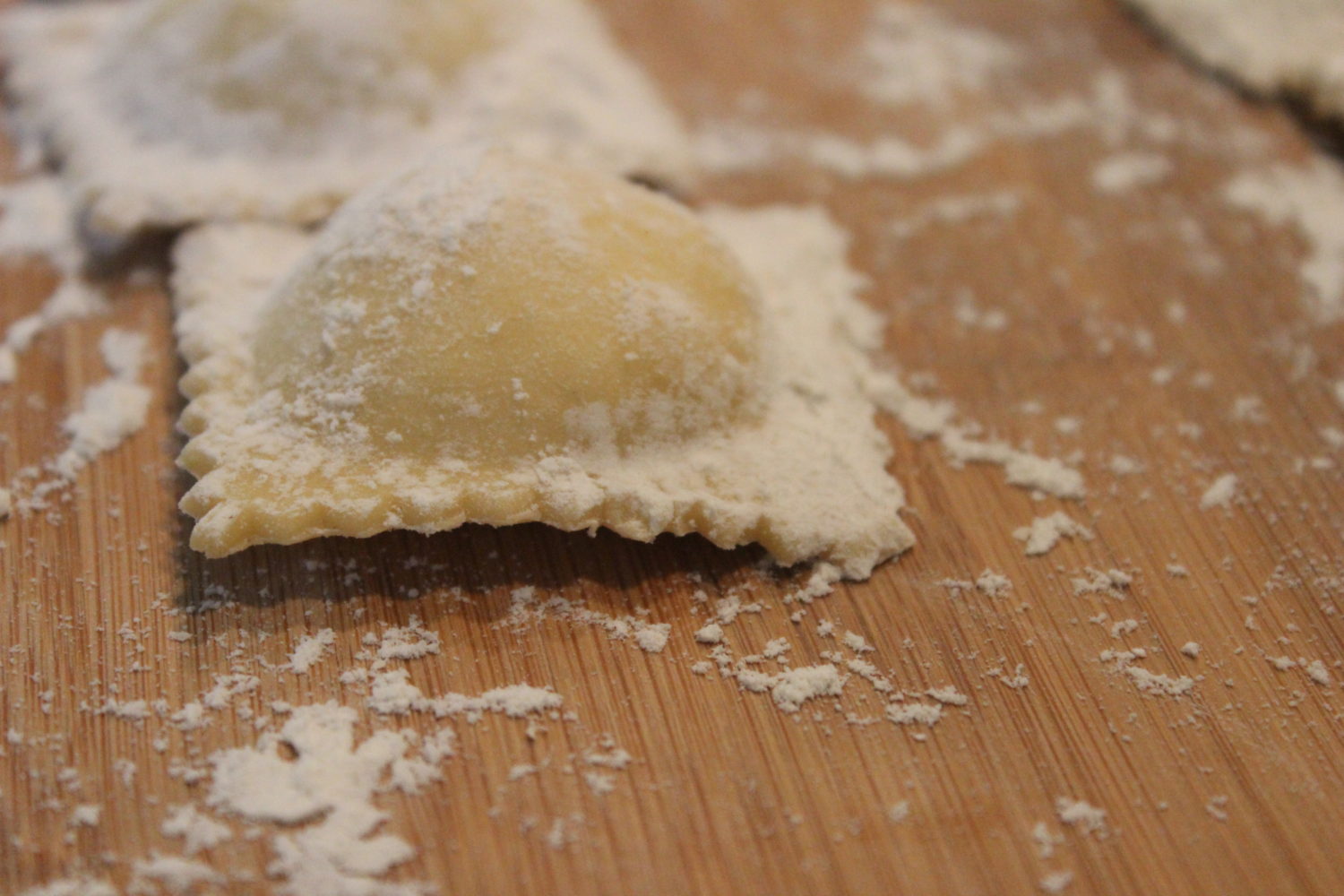
The perfect ravioli? Si!
We’d experience the same feeling other days as we dined at restaurants—only our family this time—but sharing meals together and enjoying being Romans, if only for a brief time.

Our delicious, finished product–ricotta and sage-stuffed ravioli with a butter and sage sauce.
The greatest product cooked up in Italian kitchens isn’t simply a lesson in how wonderful their cuisine can be. Let’s face it, that’s a story that’s been written a thousand times. What Italians—and to be fair, also the Spanish, the French and many other Mediterranean cultures—have truly mastered is the art of food as experience. Delectable dishes aren’t merely for savouring, they’re to be enjoyed with friends and family. Dinner is a time to be together, to bond. As we like to say at Kiss the Cook, it’s about living the moment while also loving the food.
So, grazie Roma. I may not have found the perfect pizza, but I didn’t need to. You reminded me what really matters when it comes to experiencing the culinary genius of another culture. It’s about more than the food on the plate. What matters most are the smiles on the faces of those enjoying it.
Chris Atchison, Content Manager
Contact us now to book your Italian-themed catered feast!
Our Italian hosts were kind enough to share a few of their recipes:
Scratch-made Fettucine Recipe (1 person)
Flour 4 oz
Egg 1
- Pour the flour into a bowl and create a little space in the centre
- Break the egg in this space and beat it with a fork
- Knead until the dough becomes smooth and elastic
- Shape a little ball with the dough and let it sit in the fridge for 30 minutes
- Slice the ball into 3 parts, add a little bit of flour to each, pass it in the pasta machine to roll the dough (You can use the rolling pin if you prefer)
- Lean the dough on a floured pastry board and cut off the edges, slice it in 2 parts and pass it through the pasta machine again
- Take one sheet of pasta, one by one, and roll it up
- Cut the roll in 7 mm slices
- Roll the dough with your hands and create a small nest on the floured pastry board
- Your fettucine is ready—simply boil it in salt water for s few minutes
- Add your favourite sauce
Scratch-made ravioli recipe (4 people)
For the pasta sheet
Flour 8.8 oz
Eggs 2
Egg Yolk 1
For the filling
Ricotta di Bufala 17 oz
Parmigiano Cheese 7 oz
Nutmeg and pepper to taste
- Beat the eggs and pour them in a bowl with the flour
- Knead until the dough becomes smooth and elastic
- Move the dough onto a floured pastry board and shape into a little ball, cover it and let it sit in a cool, dry place
- Mix the ricotta and the parmigiano cheese, put the mix in a freezer bag or bowl and store it. When the dough is ready, slice it into two parts and pass one by one in the pasta machine to roll the dough until you have a thin sheet (you can use the rolling pin if you prefer)
- Roll the sheet on a floured pastry board. Spoon out tiny balls of filling at the same distance apart (about 3 cm)
- To create the ravioli, close the edges of the sheet to seal the filling inside. Cut with a pasta cutter and boil in salt water
White chocolate gelato recipe (4 people)
Egg yolks 3
Sugar 5 oz
Milk 5.3 oz
Cream 8.8
White Chocolate 5.3 oz
- Beat the eggs and sugar in a bowl
- Heat milk and cream in a little pan and add the chocolate to melt it
- Pour this mix on the eggs and sugar and whisk until the ingredients are perfectly mixed
- Store it in the fridge for at least 2 hours
- After 2 hours you can put the mix in your ice cream machine and follow the manufacturer’s instructions
- Let gelato cool in the fridge for three hours before serving

